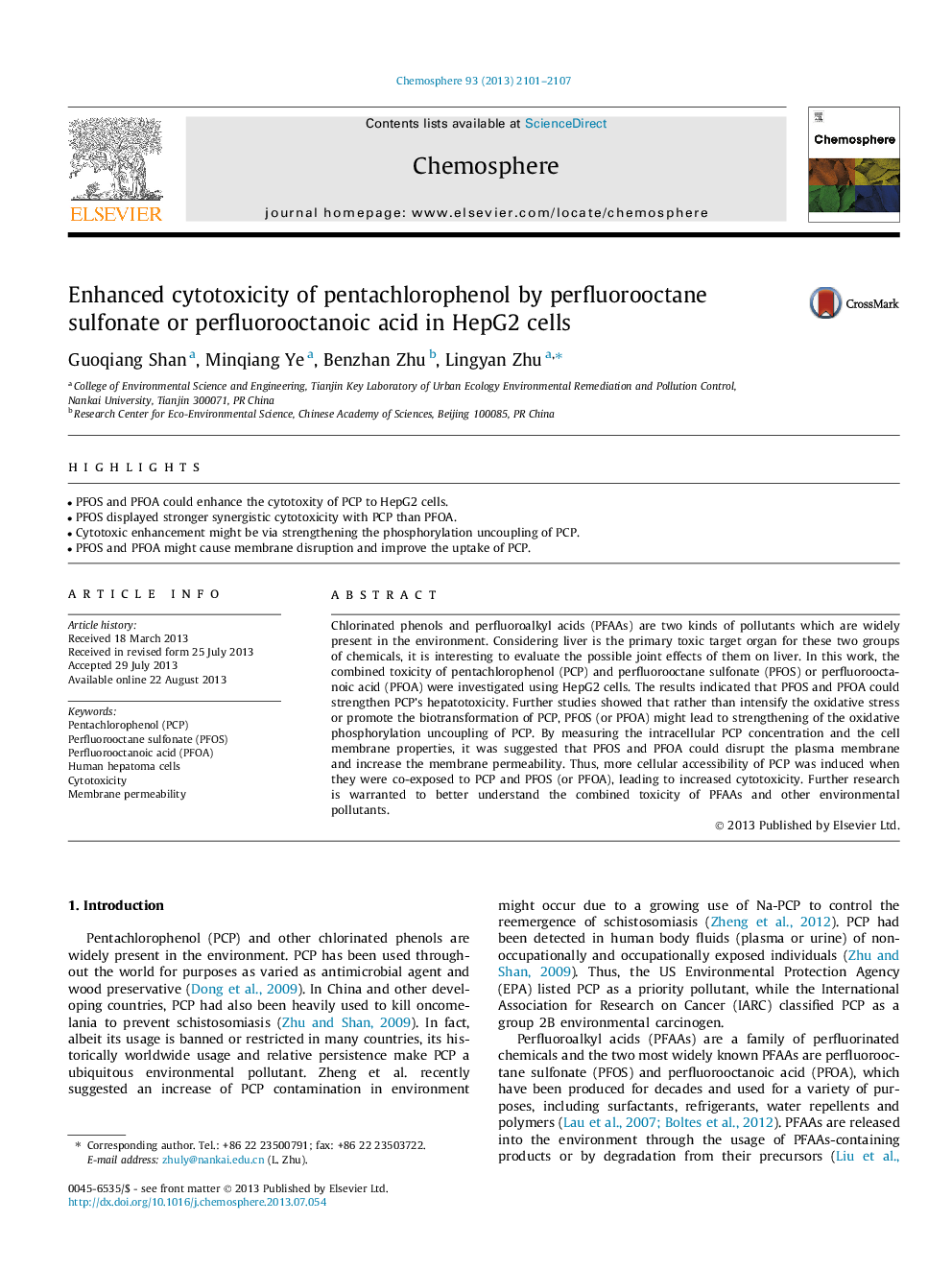| Article ID | Journal | Published Year | Pages | File Type |
|---|---|---|---|---|
| 6310193 | Chemosphere | 2013 | 7 Pages |
Abstract
Chlorinated phenols and perfluoroalkyl acids (PFAAs) are two kinds of pollutants which are widely present in the environment. Considering liver is the primary toxic target organ for these two groups of chemicals, it is interesting to evaluate the possible joint effects of them on liver. In this work, the combined toxicity of pentachlorophenol (PCP) and perfluorooctane sulfonate (PFOS) or perfluorooctanoic acid (PFOA) were investigated using HepG2 cells. The results indicated that PFOS and PFOA could strengthen PCP's hepatotoxicity. Further studies showed that rather than intensify the oxidative stress or promote the biotransformation of PCP, PFOS (or PFOA) might lead to strengthening of the oxidative phosphorylation uncoupling of PCP. By measuring the intracellular PCP concentration and the cell membrane properties, it was suggested that PFOS and PFOA could disrupt the plasma membrane and increase the membrane permeability. Thus, more cellular accessibility of PCP was induced when they were co-exposed to PCP and PFOS (or PFOA), leading to increased cytotoxicity. Further research is warranted to better understand the combined toxicity of PFAAs and other environmental pollutants.
Keywords
Related Topics
Life Sciences
Environmental Science
Environmental Chemistry
Authors
Guoqiang Shan, Minqiang Ye, Benzhan Zhu, Lingyan Zhu,
